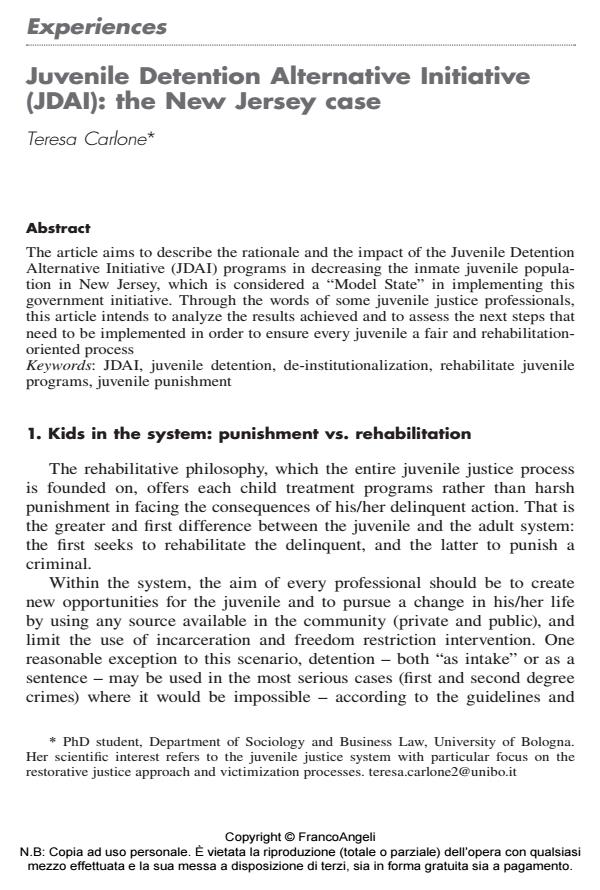Juvenile Detention Alternative Initiative (JDAI): the New Jersey case
Journal title SICUREZZA E SCIENZE SOCIALI
Author/s Teresa Carlone
Publishing Year 2015 Issue 2015/2
Language English Pages 11 P. 111-121 File size 94 KB
DOI 10.3280/SISS2015-002008
DOI is like a bar code for intellectual property: to have more infomation
click here
Below, you can see the article first page
If you want to buy this article in PDF format, you can do it, following the instructions to buy download credits

FrancoAngeli is member of Publishers International Linking Association, Inc (PILA), a not-for-profit association which run the CrossRef service enabling links to and from online scholarly content.
The article aims to describe the rationale and the impact of the Juvenile Detention Alternative Initiative (JDAI) programs in decreasing the inmate juvenile population in New Jersey, which is considered a "Model State" in implementing this government initiative. Through the words of some juvenile justice professionals, this article intends to analyze the results achieved and to assess the next steps that need to be implemented in order to ensure every juvenile a fair and rehabilitationoriented process
Keywords: JDAI, juvenile detention, de-institutionalization, rehabilitate juvenile programs, juvenile punishment
Teresa Carlone, Juvenile Detention Alternative Initiative (JDAI): the New Jersey case in "SICUREZZA E SCIENZE SOCIALI" 2/2015, pp 111-121, DOI: 10.3280/SISS2015-002008